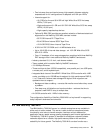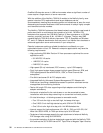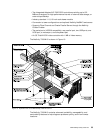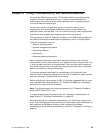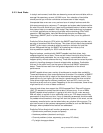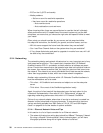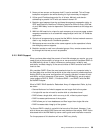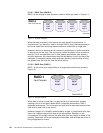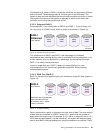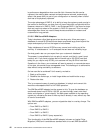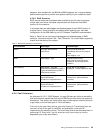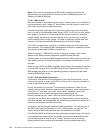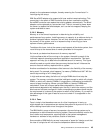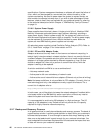Sizing, Considerations, and Recommendations 39
2. Never put two servers on the same hub if it can be avoided. This will keep
backplane congestion low while allowing for high momentary throughput.
3. Utilize good IP addressing control for all clients. Maintain sub-domain
addressing to parallel link ID with sub-network domain ID.
4. Maintain good segment layering and keep the segment propagation delay to
IEEE specifications. Maximum LAN delay should be 52ms for every 330 feet
of wire. WAN delay is carrier dependent. Solid measurements at this stage are
critical.
5. WAN to LAN insertion is unique for each company so to ensure proper system
response remember to do a bandwidth usage analysis with the J.D. Edwards
application.
6. Optimize all programming to ensure that the WAN is the last network resource
used in any one particular OneWorld operation.
7. Workgroup servers must be on the same segment as the operational clients
the workgroup server supports.
8. Maintain remote to small non-collocated groups. Also, remote access should
be through the Internet as much as possible.
5.2.5 RAID Support
When you have determined the amount of hard disk storage you require, you may
need to look at the possibility of using one or more versions of hardware RAID on
the IBM Netfinity server. A major influence on performance, reliability and
availability and data integrity is the correct choice of RAID controller and RAID
levels to use.
Why consider RAID? Given the most mechanical part in any computer today is
the hard disk drive and that the hard disk is the most commonly used component.
Adding RAID to the server configuration will instantly afford an increase in both
availability and fault tolerance of the system. The IBM Netfinity server product
range supports RAID 0, RAID 1, Enhanced RAID 1, and RAID 5 with the IBM
ServeRAID Adapter.
What is RAID? RAID stands for Redundant Array of Independent Disks, by that
we mean:
• Several disks can be linked to appear as one larger disk to the system.
• A single disk can be mirrored to another disk at a hardware level.
• RAID allows a single disk, within an array to fail, without system impact.
• RAID increases performance of the system.
• RAID allows you to have databases and files larger than single disk size.
• RAID increases data integrity of the system.
To discuss RAID in depth is not within the bounds of this book. However, if you
wish to know more about RAID there are many books on the subject. RAID is also
discussed within the IBM Netfinity server user’s guide and installation manuals.
For the purposes of this book we will cover RAID very briefly.



